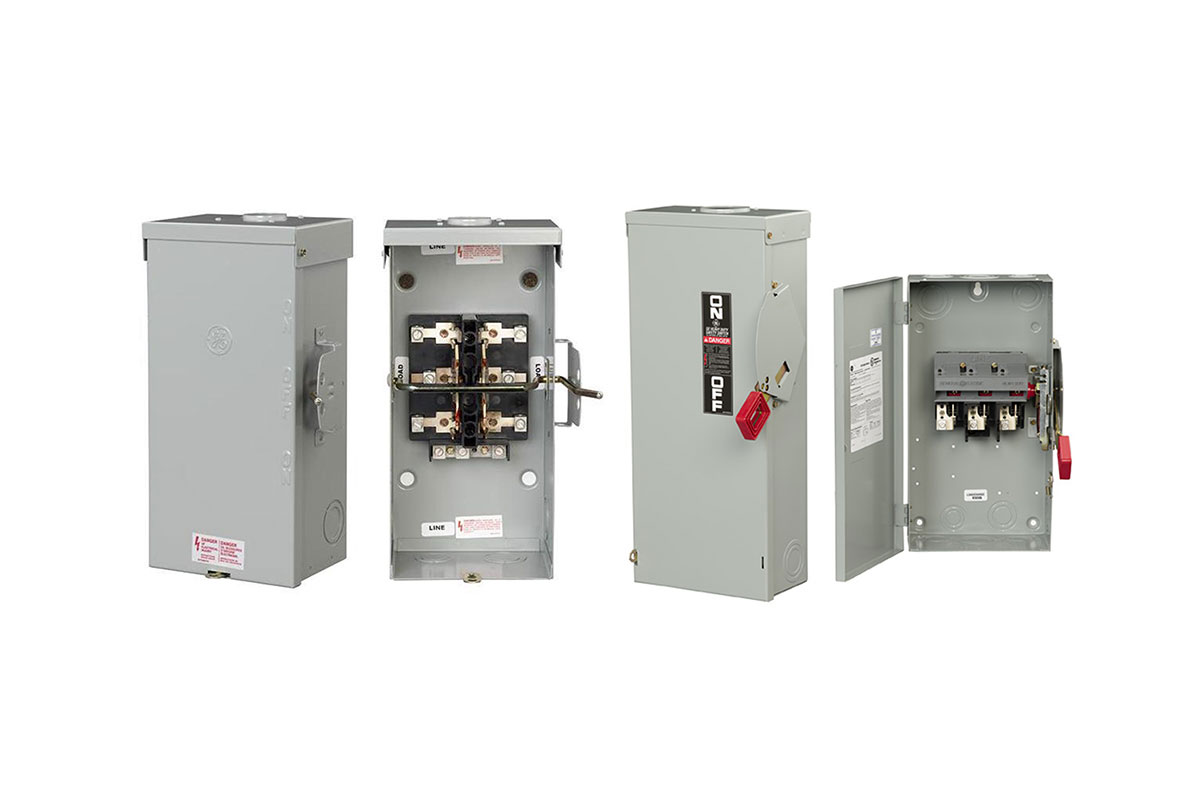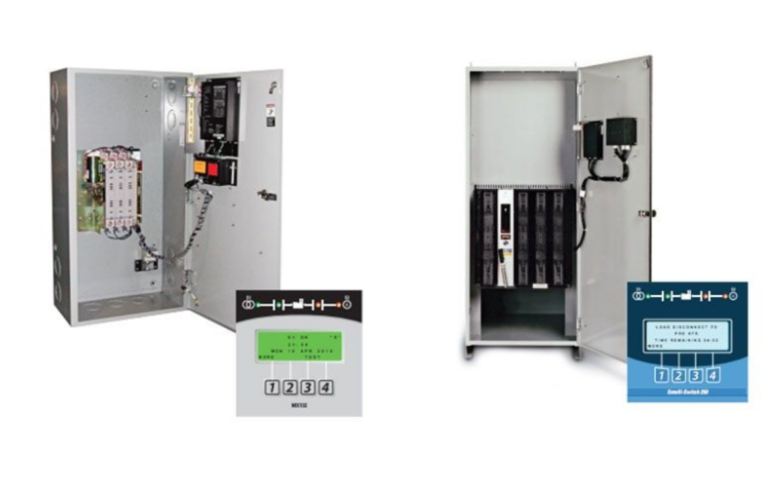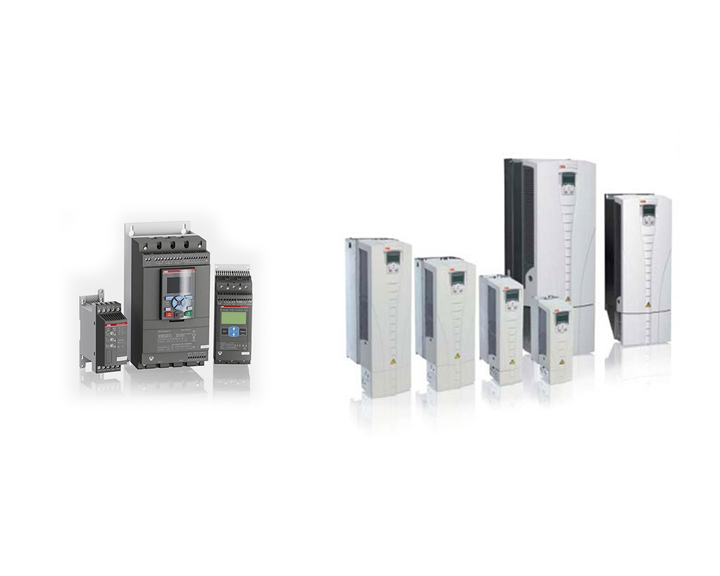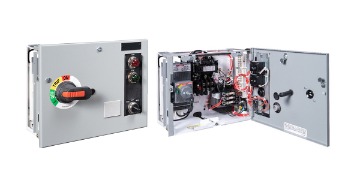What are disconnect switches?
Disconnect switches are an integral part of electrical circuits in industrial and manufacturing settings. However, they also appear in standard, everyday settings.
Regardless of the application, they play a critical role in the grand scheme of things.
Continue reading to learn more about disconnect switches and how they work.
What is a Disconnect Switch?
A disconnect switch is a type of safety device used in electrical circuitry. The purpose of a disconnect switch is to guarantee that a particular electrical circuit is de-energized in the case of an emergency stoppage, service, or maintenance.
The disconnect switch allows operators to power down the circuit entirely, creating a safe environment for the operator to complete any necessary repairs, maintenance, or inspections. It ensures a lack of energy feeding through the circuit, relieving concerns of electrical risks.
Disconnect switches must meet specific, strictly regulated specifications and standards to ensure the function and design are guaranteed.
The main functions of safety switches such as these include:
- Protection against overload
- Protection for property
- Protection for personnel
- Protection against short-circuiting
- Protection against circuit overloads
- Protection against heat-generated damage
Where are they used?
Disconnect switches are critical in many electrical applications, including electrical distribution and industrial applications. Adjustments on industrial machinery are standard, which requires an interruption in the power flow.
Or, in power distribution, emergency situations may demand a quick shut down of power or transfer from one output to another. Since the disconnect switch guarantees a lack of power in the electrical circuit, individuals working on the issue can safely complete the repair.
If the problem is isolated to a specific area of a facility, disconnect switches allow operators to shut down the isolated area by itself. While operators or technicians handle the repair, the rest of the facility can continue operating normally. In turn, this ensures productivity levels stay relatively consistent.
The National Electric Code (NEC) mandates the use of disconnect switches in all industrial and manufacturing facilities. According to the NEC’s regulations (article 430.102B), safety switches must be in sight from all manufacturing equipment or motors. “In sight” means they must be visible and no more than 50 feet from the equipment it controls.
Types of Disconnect Switches
There are two primary types of disconnect switches: electrical disconnect switches and battery disconnect switches. Although disconnect switches are commonly associated with industrial settings, they also appear in household settings, which we discuss in the following subheadings.
In addition, there are two classifications of disconnect switches: fusible and non-fusible. With fusible and non-fusible safety switches, the switch disconnects the load from its electrical power source when the circuit is open.
When the circuit closes, the load reconnects, restoring power. Fusible and non-fusible loads are different, despite the fundamental similarity.
Electrical Disconnect Switches
This type of disconnect switch is common on electric motors, including aircraft tow tractors, industrial forklifts, and agricultural vehicles. Electrical disconnect switches are also used on various appliances, including air conditioners and heaters. This helps ensure the safety of contractors working on the appliance.
Electrical disconnect switches usually adhere to the International Electrotechnical Commission’s (IEC) international standards or the National Electrical Manufacturers Association’s (NEMA) U.S. standards. However, both regulating bodies work together to create and uphold quality standards for electrical product manufacturers.
Battery Disconnect Switches
This type of disconnect switch is a knife switch that prevents unwanted draining from a vehicle battery when the vehicle is unused or stored. The battery disconnect switch is installed over the positive or negative terminals on the car’s battery, helping prevent unwanted drainage.
Alternatively, another type of battery disconnect switch comes with a removable knob. The knob helps prevent the vehicle from being stolen while parked in a public parking lot for an extended period.
Fusible Disconnect Switches
This classification of disconnect switches, fusible disconnect switches, consists of various fuses within the same enclosure. They simplify the process of selecting and separating one portion of the circuit.
Since these disconnect switches combine fuses with the switch in a specific enclosure, they promote easy access for manually opening and closing the circuit. Simultaneously, the fuses protect against overcurrent.
The combination of the two helps keep workers performing necessary maintenance safe from electrical currents while also preventing damage to the circuit.
Compared to its non-fusible counterpart, fusible disconnect switches offer an elevated level of safety. In the event of a breach, like an overcurrent, the system ensures the isolated circuit portion will remain dead, without current flowing through it while it undergoes maintenance.
Non-Fusible Disconnect Switches
Unlike fusible disconnect switches, non-fusible disconnect switches don’t offer any circuit protection capability or incorporate fuses into the enclosure. The sole purpose of this kind of switch is to create an easy method for opening and closing the circuit.
How do disconnect switches work?
Disconnect switches promote overall safety by isolating a specific sector of a circuit. They do this by cutting off their electrical supply, making the circuit safe for service, maintenance, or repairs.
These devices can also quickly halt and disconnect circuits from the power supply in the event of an emergency. Disconnect switches can work in conjunction with circuit breakers, interrupting the flow of electricity along a circuit when it exceeds the circuit’s capacity.
They can work with AC or DC systems and are available for single-phase and three-phase power.
Disconnect Switches General Specifications
The specifications surrounding disconnect switches fall into a few different categories. The general specifications of disconnect switches include:
- Type
- Fusible: Offers more protection
- Non-fusible: Not designed to support external fuses
- Power
- AC: Suitable for AC systems
- DC: Suitable for DC systems
- Phase
- Single-phase: Designed for single-phase systems
- Three-phase: Designed for three-phase systems
- Mounting Style:
- DIN Rail: Designed for mounting on standard DIN rail
- Panel Mount: Can be placed into or through a depression in an existing panel, so the face sits flush with the panel. Often used in applications where the panel is required to fit a panel cutout.
- Base Mount: Use a mounting pad, typically using screws.
- Wall/Box Mount Receptacle: Usually flanged and threaded for an accessory, intended for permanent mounting.
- Flange: Flange-mounted plugs (flanged inlets) or receptacles (flanged outlets) are attached to panels via bolting to the flange. May rivet the flange in place via holes in the flange surface.
- Other
Other specific specifications include the disconnect switch’s performance (current rating, horsepower rating, operating voltage, etc.) and approvals (IEC, CSA Mark, RoHS, etc.).
When selecting a suitable disconnect switch, it’s essential to analyze performance specifications. These parameters specifically include:
- Current rating: This is the rated operating current of the safety switch.
- Operating voltage: This refers to the maximum operating voltage of the switch.
- Short-circuit interrupt capacity: This is the maximum short circuit current that triggers the fuse.
- Number of poles: These are the elements of the device that control a singular path of the circuit; an output terminal of the switching device; a combination of mating contacts (usually open, usually closed, or both).
- Horsepower rating: This is the maximum rated horsepower of the disconnect switch.
Conclusion
Disconnect switches are a vital component in various electrical applications across the board. They’re essential for promoting the safety of personnel and machinery in industrial and manufacturing settings. Multiple manufacturers produce and market disconnect switches, meeting different specifications for various settings.
If you need help selecting a disconnect switch for your application, contact us to discuss your requirements. Browser or GE Disconnects and all other Switches & Disonnects we offer at Bay Power.




